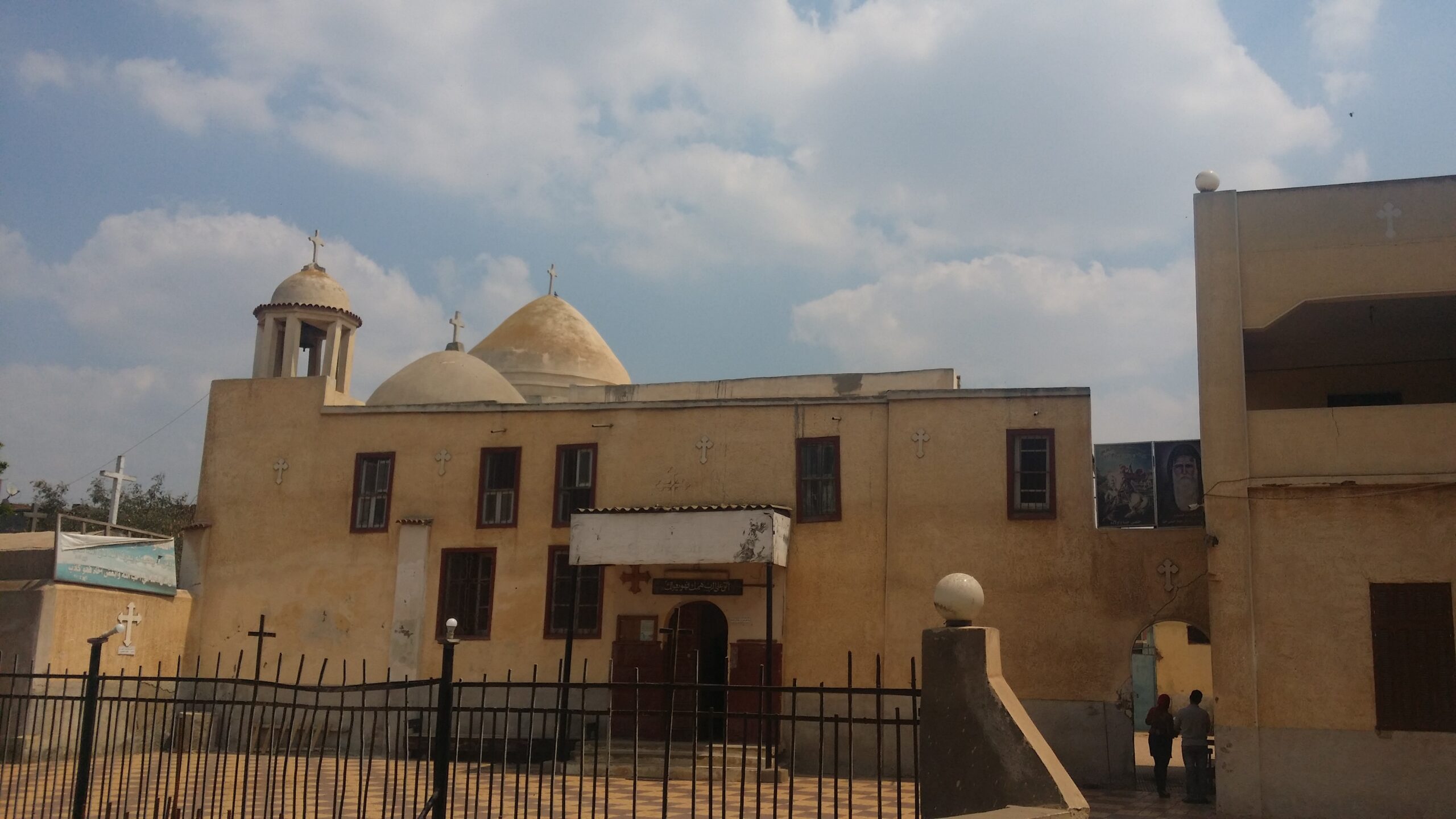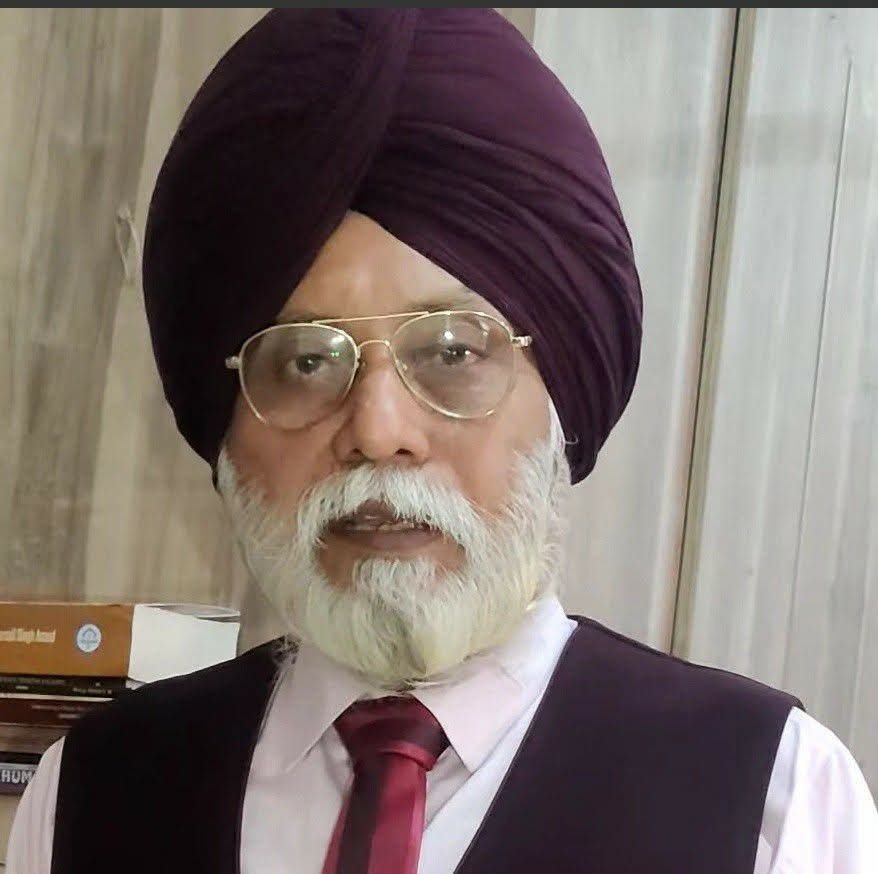Came with the aim of shedding light on the icons of the nineteenth-century Greek painter and writer “Anastasius” there. So, despite the simplicity of the church, we fell captive to the psychological comfort it instilled in our souls, and discovered a new path. Lamadia of the Holy Family’s journey in one of the blessed parts of Egypt. The credit for this revelation goes to Father “Jonah Labib,” the priest of St. George Church in Kafr al-Khair , who, despite his ill health, was self-reliant and received us with great love and generosity. With a cheerful face - despite enduring the pain and illness - we welcomed him, saying: The church is my home, I spent my entire life in worshiping God, and in the kingdom I also completed my worship... Welcome to Kafr Al-Khair ... Goodness is God with all His blessings and gifts... and this village ( Kafr Al-Khair ) The Holy Family passed through it during its blessed journey in Egypt. In order for the Holy Family to come from the city of Sakha, it headed west on its way to Wadi al-Nadroun. It is necessary to pass through the villages of: Shabas Al-Shuhada site, then Kafr Al-Khair, Mahalla Deya, and MinyaJanaj, then cross the Nile towards the south of “Damanhur”, where Wadi Al-Natroun is. Also, the photographer of church icons is “Anastasius” Al-Rumi, who was famous for photographing icons in the nineteenth century for many churches and monasteries , including many of the sites where the Holy Family resided or passed, including, but not limited to: the Muharraq Monastery in Assiut, the Church of The Virgin in HaratZuwailah, the Church of the Virgin in the Palace of Wax, the Church of Abu Sifin and others. The conversation in turn moved from the priest’s side with a cheerful face to Dr. Mohamed Ghorab, Inspector of Islamic Antiquities in Dessouk, so he told us about the history of the construction of the church, saying: The Church of St. George is located in the village of Kafr Al-Khair , the center of Desouq, Kafr El-Sheikh Governorate. It is a village adjacent to a village bearing the name of Shabas Al-Shuhada. The construction of the church dates back to approximately the year 1582 AH / 1865 AD, and perhaps earlier than that. According to the date on the icons, it is 1582 A.D., as for the icon holder, the date is recorded on it approximately 1587 A.M. / 1870 A.D.. Thus, the church dates back to the era of Khedive Ismail. What confirms the return of the church to this date is a contract for a citizen to give up a plot of land located on the church campus. This contract dates back to January 6, 1892 AD, and it contained evidence confirming the existence of the entire church building on this date. As for the general plan of the church, Dr. Hanan Mikhail Nasr, who works as an antiquities inspector in the central Delta antiquities area, told us about it, saying: The church follows the simple basilica plan, which is characterized by its tripartite division into three wings, by two rows of arches carried on columns or supports. With an area extending longitudinally from east to west, its internal dimensions are approximately 14 m

It is divided into three wings using two rows of square supports, and these supports are bound with wood from the bottom, and each row of supports carries three semicircular arches. The widest and largest wings are also the middle wing, where the width of the middle wing is approximately 6 m, while the two side wings are approximately 4 m, and each ends A wing on the east side with a dome, and in the middle of the eastern wall is an apse (the apse is considered one of the important and fixed architectural elements in the structure of the Egyptian church ), a semi-circle inside the Holy of Holies, and it is like a small niche. This apse is also preceded by a marble amphitheater, preceded by the altar of the temple, and this structure is covered by its dome. Special features: it is left bare of grout on the outside. The ceiling of the middle wing is higher than the rest of the wings, as it contains a number of glass windows. This is for lighting and ventilation using the “Calstory Windows” method used in Egyptian temples. The church has four free sides, which are facades with clear directions: north, west, south and east. These facades are simple and devoid of decoration, and all facades are approximately 6 m above the surface of the ground. Dr. Muhammad Ghorab took us to the church tower, which is located in the northeastern corner. It consists of a square base approximately 2 x 2 meters, and topped by an octagonal arch supported on eight small supports. The arch is topped by a small smooth dome topped with a cross, and inside the tower there is an iron bell installed. From the top with wooden veins, it itself is decorated with decorative bands executed with relief engraving, and on the bell there are French decorations, inscriptions and writings dated 1914 AD - as Dr. Ghorab told us - but unfortunately we were not able to see them due to the narrow holes for the ropes (which are two iron sticks) that attracted the handmade bell. And we continue the journey of discovering the beauty of this spiritual church with Dr. Ghorab, who stopped a lot at the details of the icon stand (wooden veil), located on the eastern side of the church nave , separating Jerusalem from the Holy of Holies (the temples). This stand is divided into three sections, with one section Each wing of the courtyard, and the two side sections, are completely similar. Here we suffice with describing the middle icon stand, which is extremely precise and perfect, as it was executed using the method of assembly and interlocking in its manufacture, and all of its fillings are inlaid with ivory, and it consists of a group of fillings that take the shape of a square. Each filling contains the shape of a triangular cross (Coptic), with multiple heads, and is inlaid. In ivory, they all refer to the twelve disciples of Jesus Christ (peace be upon him). The square inlays contain hexagonal star-shaped shapes, and the squares also enclose the shapes of other eight-pointed crosses (the Maltese Cross). They are also inlaid, and inside them is a fish-shaped cross. On either side of the middle stand are two small, square windows on the outside. Each window is arched with a semi-circular arch. Its outer frame is decorated with triangle shapes made of ivory, and each kosha of the arch has a cross with edges that take the shape of a triangular leaf, a botnet cross with curved arms that spread out radiating from the center. In the middle of the stand is the access door to the middle structure, which is a rectangular opening crowned with a semicircular arch, and is closed by two leaves, each of which is divided into four vertical fillings inlaid with ivory. The upper and lower fillings are filled in a fashionable manner. An equilateral cross, with four square fillings in the corners. As for the second and third fillings, the middle was filled in the shape of a hexagonal star, surrounded by six hexagonal fillings, inside of which I filled in star shapes with inlay, and the corners of the filling took the shape of a crow’s house. The outer frame of the door’s arch was decorated with inlay that takes the shape of crosses. The edges of which take the shape of a triangular leaf, and with the two knobs there is a decoration on each kush that resembles a vase, from which emerges a plant branch, from which some leaflets emerge, and from this type emerges another branch, which in turn branches into plant leaves, preceded by the shape of a dove. At the top of the door arch, there are Arabic and Coptic inscriptions, inlaid with ivory, inside five rectangular areas, three at the top and two at the bottom. The text of these inscriptions is: Hail to the great martyr Mary Girgis / in the year 1587 Coptic / (Coptic inscriptions), this is the door of the Lord / and there is an intervention in it. The righteous. Above the door is a transverse rectangular area divided into three fillings, the largest of which is the middle, which is a rectangular filling divided into six inscriptions. As for the two side fillings, they are square and divided into three horizontal inscriptions, on top of each other, and its inscription is as follows: The middle filling: Coptic inscription / Coptic inscription “Peace”. For the temple of God the Father, drawing the temple of the great martyr Mary Girgis. He wrote on the right pad: Remember, O Lord, your servant, who is interested in doing this... in your kingdom. And on the left pad, he wrote: Recompense, O Lord, who has labored in me. On both sides of the door, there are two rectangular panels along the length of the door, and the inscriptions above it are filled with inlaid inlays that take the shape of an equilateral cross. Above the icon stand are seven icons of the illustrator and painter Anastasia. Since the newspaper had decided to simplify documentation of the Church of St. George in Kafr Al-Khair , which, despite its history and the archaeological objects it contains, is not registered in antiquities records, the time has come to register it and preserve it, so that it does not fall prey to neglect, and to ensure the preservation of this living recorded document. In the folds of time.








